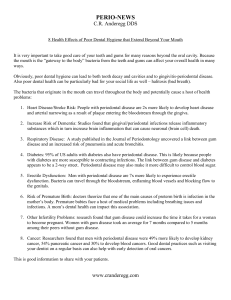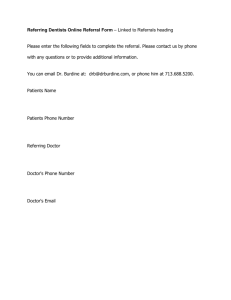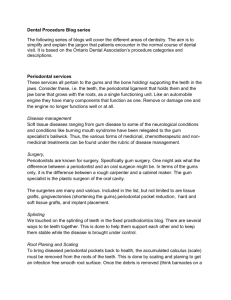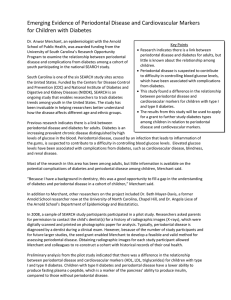People with diabetes are more likely to have
advertisement
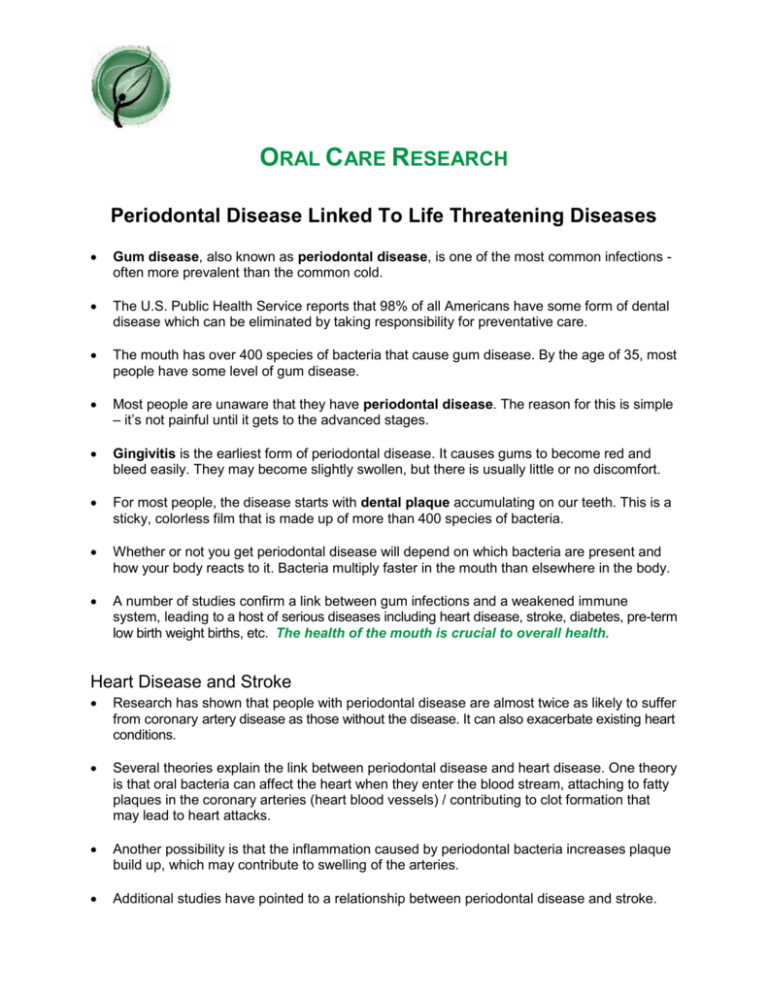
ORAL CARE RESEARCH Periodontal Disease Linked To Life Threatening Diseases Gum disease, also known as periodontal disease, is one of the most common infections often more prevalent than the common cold. The U.S. Public Health Service reports that 98% of all Americans have some form of dental disease which can be eliminated by taking responsibility for preventative care. The mouth has over 400 species of bacteria that cause gum disease. By the age of 35, most people have some level of gum disease. Most people are unaware that they have periodontal disease. The reason for this is simple – it’s not painful until it gets to the advanced stages. Gingivitis is the earliest form of periodontal disease. It causes gums to become red and bleed easily. They may become slightly swollen, but there is usually little or no discomfort. For most people, the disease starts with dental plaque accumulating on our teeth. This is a sticky, colorless film that is made up of more than 400 species of bacteria. Whether or not you get periodontal disease will depend on which bacteria are present and how your body reacts to it. Bacteria multiply faster in the mouth than elsewhere in the body. A number of studies confirm a link between gum infections and a weakened immune system, leading to a host of serious diseases including heart disease, stroke, diabetes, pre-term low birth weight births, etc. The health of the mouth is crucial to overall health. Heart Disease and Stroke Research has shown that people with periodontal disease are almost twice as likely to suffer from coronary artery disease as those without the disease. It can also exacerbate existing heart conditions. Several theories explain the link between periodontal disease and heart disease. One theory is that oral bacteria can affect the heart when they enter the blood stream, attaching to fatty plaques in the coronary arteries (heart blood vessels) / contributing to clot formation that may lead to heart attacks. Another possibility is that the inflammation caused by periodontal bacteria increases plaque build up, which may contribute to swelling of the arteries. Additional studies have pointed to a relationship between periodontal disease and stroke. Diabetes People with diabetes are more likely to have periodontal disease than people without diabetes. Severe periodontal disease can increase blood sugar, contributing to increased periods of time when the body functions with a high blood sugar. This puts diabetics at increased risk for diabetic complications. This recommendation is supported by a study reported in the Journal of Periodontology in 1997 involving 113 Pima Indians with both diabetes and periodontal disease. When their periodontal infections were treated, the management of their diabetes markedly improved. Pre-term Low Birth Weight Births Pregnant women who have periodontal disease may be seven times more likely to have a baby that is born too early and too small. Respiratory Diseases Recent research suggests that bacteria found in the throat, as well as bacteria found in the mouth, can be drawn into the lower respiratory tract. This can cause infections or worsen existing lung conditions. It’s believed that bacterial respiratory infections are acquired through aspiration (inhaling) of fine droplets from the mouth and throat into the lungs. These droplets contain germs that can breed and multiply within the lungs to cause damage.
